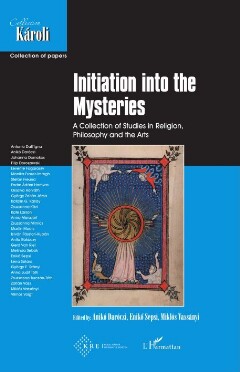Oldal 149 [149]
A CHRISTIAN-HERMETIC-JUDAIC INITIATION...
Pontano, who had a spectacular career there, rising from a penniless scholar
and poet to chancellor of the state. Lazzarelli was not so fortunate," but at
least for some years he secured for himself a cultured and quiet environment.
This is where he wrote the Crater Hermetis, his major contribution to
the literature of Italian Renaissance Hermetism.”
In the meantime, da Correggio suffered ups and downs. He was imprisoned
several times, the first time in Rome, probably right after his extraordinary
pageant, and later in Bologna and Florence. As Ruderman suggested,
“The inherent danger to religion posed by the magical teachings of this
Hermetic circle was that they claimed to produce the same effects without
any divine agent. Faith in a figure like Mercurio threatened to present itself
as a rival religion, challenging the basic contention of the Catholic Church
that Christian revelation is unique and exclusive and that there is no other
legitimate revelation. Moreover, prophecy was now taken out of the domain
and control of the Church and placed in the hands of any individual who was
capable and willing to prepare himself to master a natural art."
At the same time, da Correggios prophetic pageant can be seen as
characteristic pre-Reformation apocalypticism, striving for individual pietistic
revelation, which, of course, was also seen as a threat by the Church.
THE CRATER HERMETIS
Around 1494 in Naples, Lazzarelli-Enoch finished his opus magnum,
the Crater Hermetis, or The Mixing Bowl of Hermes," which he dedicated
to the king. Ihe work is based on an extraordinary concept involving Enoch.
Crater Hermetis is a Platonic-style dialogue in which the participants of the
conversations are Ferdinand, Pontano, and the author himself. Ihe subject
matter of the conversations is the paths towards spiritual rebirth and
the attainment of gnosis, i.e. an initiation into the mysteries. Ihe instruction
culminates in the supreme mystery of the "making of gods, echoing
the Hermetic Asclepius. Already Kristeller recognized the importance of
From his private correspondence we know that he actually felt embittered by the disinterest
shown in his mission by the king and Pontano (Saci, Lodovico Lazzarelli, 1999, 89).
The terminology concerning Hermetism and Hermeticism is often confusing. I follow
Wouter Hanegraaff’s advice, who suggests using the former term restrictively about the direct
influence of the Corpus Hermeticum and its ideology, while Hermeticism can accommodate
all sorts of syncretistic esoteric and magical developments rooted in the Renaissance, no
doubt often inspired (but not exclusively) by the original Hermetism, too. See Hanegraaff,
Lazzarelli, 2-8; also the studies in Broek and Hanegraaff ed., Gnosis and Hermeticism from
Antiquity to Modern Times (1998).
Ruderman, John Giovanni Mercurio da Correggio’s Appearance in Italy, 320.
A full analysis of the work is in Hanegraaff, Lazzarelli, 57-96.
+ 147 +
Daréczi-Sepsi-Vassänyi_Initiation_155x240.indb 147 6 2020. 06.15. 11:04:17

